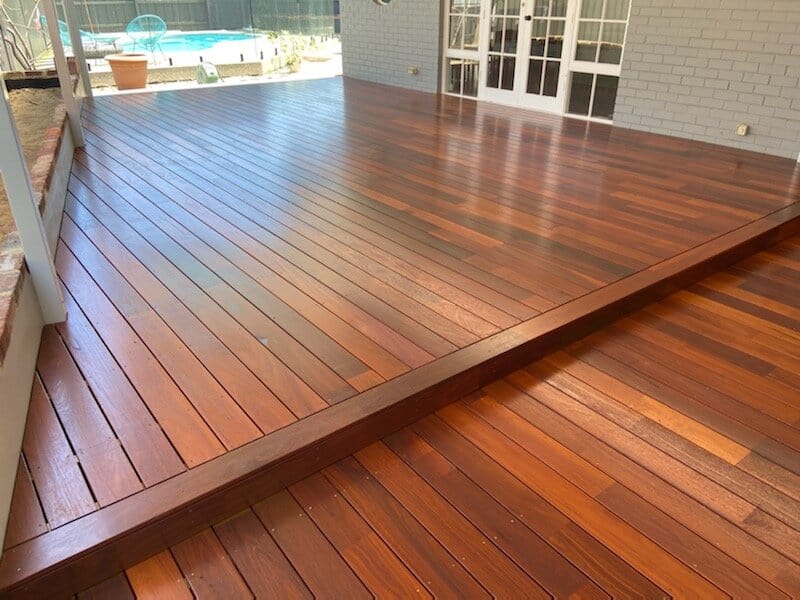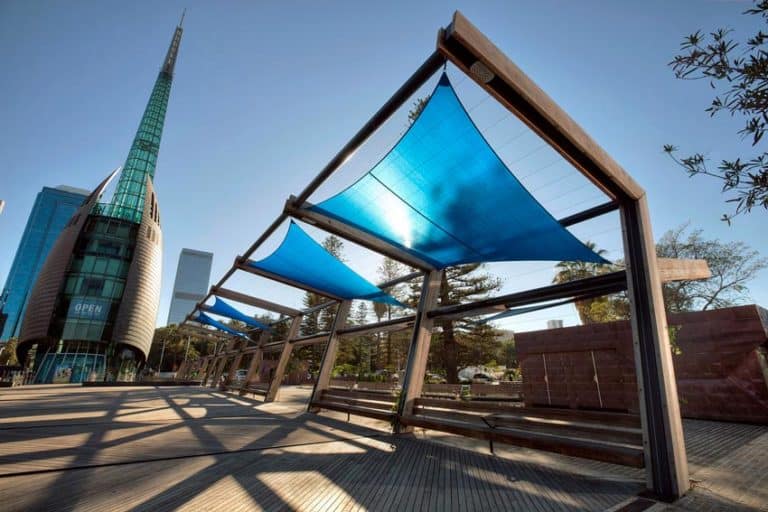To gain an understanding of what composite decking is, it is important to start at the beginning and learn what, exactly, the word composite means.
Composite refers to anything that is made of more than one material. When these materials are combined, it creates new characteristics that did not originally exist.
In terms of composite timber, the materials that are used are a mixture of wood fibres (sawdust), plastic and different binding agents. When these ingredients are combined, they form a material that is heavier, stronger and denser than wood alone.
 Source: Trex
Source: Trex
History
The only material that used to be available for deck construction was timber. However, this all changed in the early 1990s. Development in manufacturing techniques and a demand for products that did not put pressure on an already depleted supply of virgin timber created a market for wood-plastic composites.
Even though most decks are still built with traditional timbers, composites have become increasingly popular over the last 25 years because of their unique characteristics.
Features
In most situations, working with composite timber is quite similar to working with wood. It also has a number of additional benefits:
- It is less likely to split or crack.
- It is engineered to be resistant to stains and fading.
- It has a much lower requirement for maintenance to maintain its good looks
Benefits
More people are turning to composite timber for their decking, as it has a number of benefits. To summarise, benefits include:
Ease of installation – Composite decking is often manufactured with a “groove” system, allowing the planks to fit together easily with hidden fixings. This decreases the time it takes to install and gives a clean uniform look.
Safety – Unlike timber, composite does not splinter, which makes it safe for bare feet and pets. Some composite products also have anti-slip properties.
Appearance – Composite decking is created with a finish that mimics the look of wood so you don’t have to miss out on the aesthetic quality of timber.
 Source: Timbertech
Source: Timbertech
Eco friendly – Products like Trex decking use 95 percent recycled materials [source] and place less demand on timber from forests and plantations.
Disadvantages
No matter how you look at it, composite has one disadvantage over timber – it costs more to purchase. Despite this, it is actually a better financial investment than timber. The economic benefits of composite decking come into play when you view it as a long term investment.
There is one main reason composite decking will save you money over the long term:
Composite decking requires virtually no maintenance beyond occasional cleaning with soapy water. That means you will be spending less time and money on resealing and resurfacing. Over many years, the savings can really add up.
Brands
Trex – Trex is considered to be the world’s #1 composite decking brand and it’s easy see why. It’s a low maintenance, high performing deck, with properties that make it resistant to most problems that decks face – scratching, staining, mould, and fading. The manufacturers are so confident in its endurance that they have included a 25 year limited residential warranty and a 10 year commercial warranty.
TimberTech – Timbertech is a composite decking material with features that make it perfect for the Australian environment. The material has special patented technology that protects it from water and slippage.
ModWood –Australian summers can be quite severe. ModWood decking is designed to withstand intense climate conditions, making it a perfect choice for Australia’s home owners looking for a low maintenance and sturdy alternative to traditional timber.
What’s more, ModWood has a flexibility when it comes to design as it is available in a wide range of sizes, colours and finishes.
Now that you have a better understand of what composite is, you might like to consider it is a decking option. If you have any questions or would like to learn more about composite decking, don’t hesitate to contact us.


































